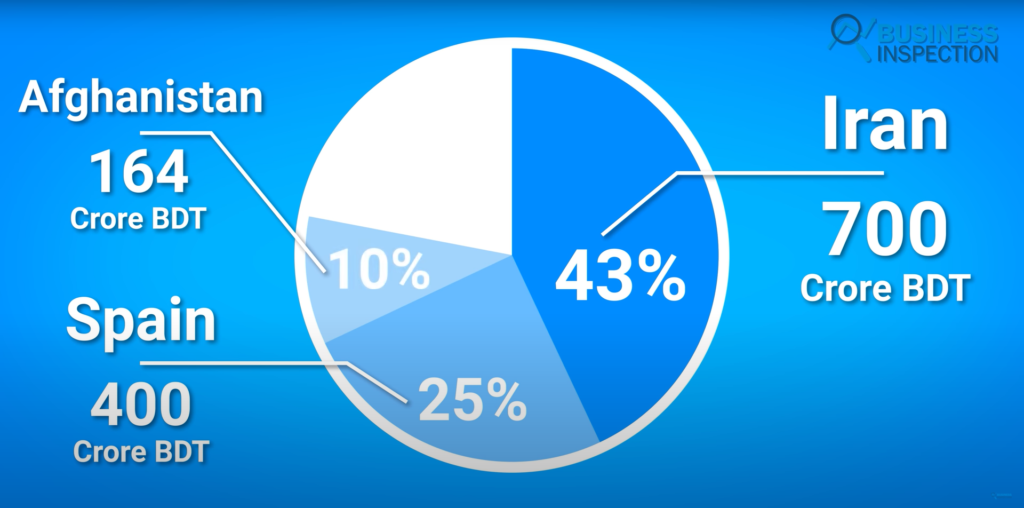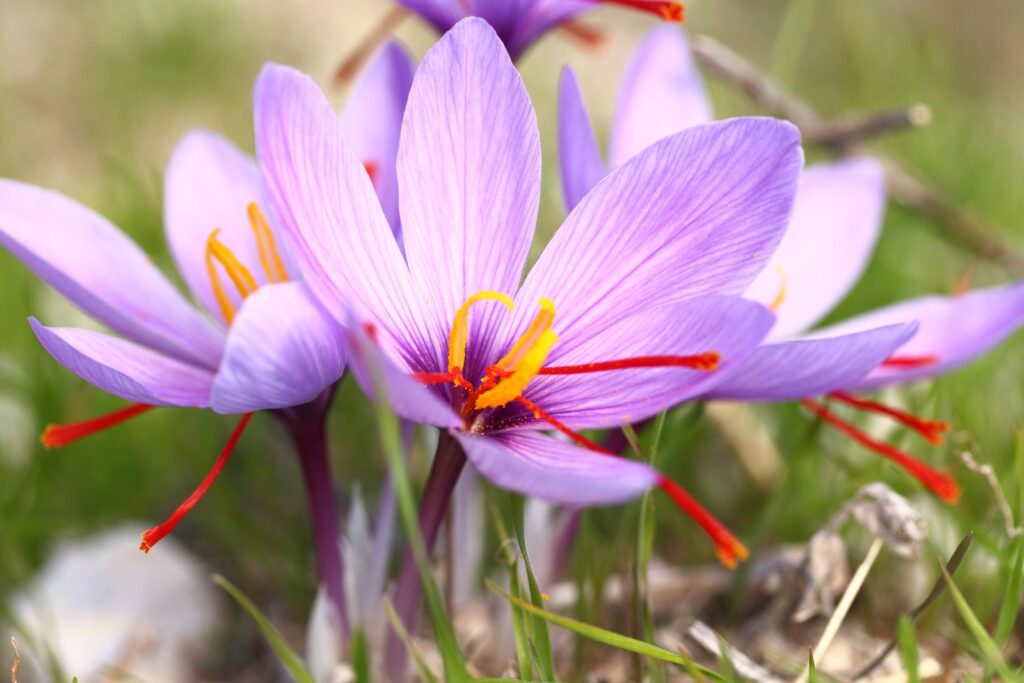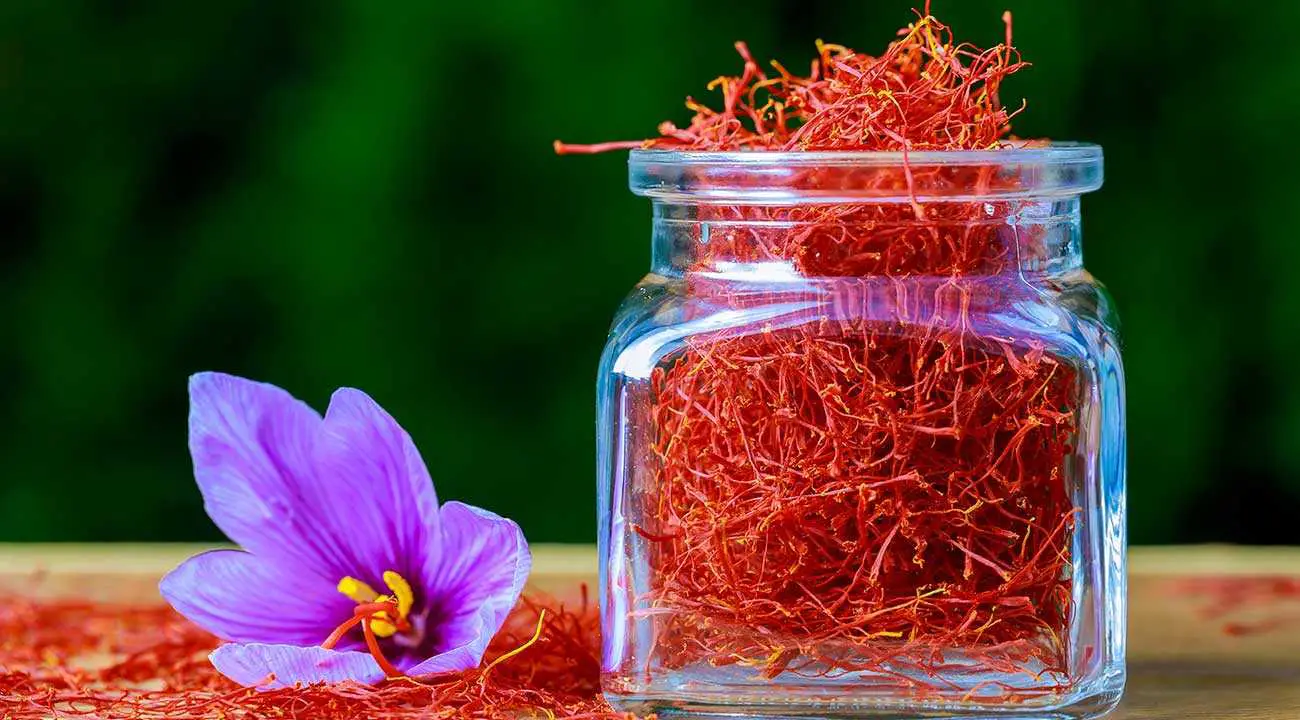Table of Contents
Saffron is one of the spices used in Indian and Persian cuisine. Saffron is widely used in spicy and sweet foods including biryani, curry, paella, risotto, firni, in the Indian subcontinent, Iran, Turkey, Italian, Spanish, and many more. In addition to the taste and bright color of saffron as a spice, it has been very popular since ancient times as a diet and beauty ingredient.
Saffron is noteworthy for another reason besides all of its useful qualities. Saffron is one of the most expensive spices in the world. In a 2020 report by Business Insider, the price per kilogram of pure saffron is more than 10 thousand dollars or more than 8 lakh rupees.
Apart from spices, saffron has also been used in the pharmaceuticals, skin care, textile, and dyeing industries. As per Grandview Research, the saffron market was estimated to be worth Tk 7494 crore in 2019. On the contrary, Grand View Research estimates that it could experience compound annual growth of 7.3 percent by 2026, according to the study.
The History Of Saffron
Basically, Saffron is the stigma or female part of the flower known as Autumn Crocus or Crocus sativus. This is basically the dark red part of the flower. The dark red part of the flower is collected, dried, and then used as saffron for cooking.
Saffron has historically been used as a perfume in the courts, theaters, and public baths of the Greek and Roman empires. Other than that saffron was also used for cosmetics and a diet for various ailments. Similarly, saffron was also popularly used as a dye in ancient India. Even royal costumes used distilled fabric dyes from saffron stigma.
At different times in history, saffron has weighed more than gold in terms of weight as a spice, and it is still one of the most expensive spices in the world. Saffron was mainly cultivated in the Mediterranean areas, Turkey and Iran. It is thought that the Arabs began cultivating saffron in Spain around 961.

Saffron is currently cultivated in the Iranian province of Khorasan, in the Indian part of Kashmir, and in Spain, Italy, Greece, and Morocco. Saffron cultivation is also gaining popularity in Afghanistan and in the United States. However, in 2019, Iran was the top saffron producer across all of these countries, producing 430 tons of spice.
On the other hand, India, which is in second place, produced 22 tons of saffron in 2019. In 2019, saffron was exported worldwide for more than Tk 1617 crore. Which, Iran accounted for 43% of the global saffron market by exporting saffron worth around Tk 700 crore. On the other hand, Spain’s market share was 25 percent with the export of saffron worth more than Tk 400 crore.
Despite being a new player in saffron exports, Afghanistan already has captured more than 10 percent market share by exporting more than Tk 164 crore worth of saffron to India. One of the top brands in the saffron market is Jaffran Saffron, Golden Saffron, Mehr Saffron, Delitaliana Spanish Saffron, Rumi Spice Saffron, etc.
Why Is Saffron So Expensive Expensive?
In addition to saffron’s global soaring demand, its price is also on the rise. However, due to the high demand for spice, saffron cultivation has started in countries like Afghanistan and the United States, but the supply is still insufficient compared to the demand. Which is a big reason behind the high price of saffron. But one of the reasons behind the high price of saffron is its cultivation process.
Saffron cultivation requires a lot of space. Each Crocus Sativas or saffron flower has only three stigmas. That is, from each saffron flower, 0.006 grams of raffle or 6 parts of 1000 parts of 1 gram of spices are obtained. As such, 1 kg of saffron will require 160,000 or more flowers to produce. About 1.8 kg or more of saffron can be produced per acre of land. About 600 kg of cumin can be produced in the same area. Saffron production requires a lot of space due to its low yield ratio.
Along with a low yield ratio, saffron production is quite labor-intensive. The whole process of saffron cultivation depends on manual labor. Sunlight is a very important part of the taste and aroma of saffron. So the flowers are collected every morning before the sun rises. Also, let dry and separate the stigma from the flowers, each task has to be done manually.
The task of separating the stigma from the flower cannot be done by any machine. Since 160,000 flowers are required to produce one kg of saffron, it is easy to estimate the number of workers required for lifting so many flowers and harvesting stigma from them.
In Iran, mainly women work in the saffron field and each earns an average of 5 dollars or 425 takas per day. On the other hand, saffron harvesting in Indian Kashmir is often done as a family activity with everyone participating. No matter what the harvesting process is, saffron harvesting is quite time-consuming and labor-intensive.

The quality of saffron depends on the stigma. The stigmas with a dark red and a white portion at the beginning of the flower are of lesser quality. On the other hand, the stigmas that have only the red part are saffron of the highest or pure quality.
However, harvesting only the red part, further reduces the field ratio of saffron, resulting in higher prices of high-quality pure saffron. To determine saffron quality, the International Organization for Standards has defined four grades.
Based on the presence of the major components of saffron Crocin, Picrocrocin, and Safranal through Photospectroscopy, four limits have been determined of which Grade 1 is the highest quality and Grade 4 is the lowest quality. Iran and Spain also have their own grading systems. Iranian saffron is widely considered the highest-grade saffron due to its climatic advantages.
Weather is a very important issue in saffron cultivation. Adequate irrigation along with weather has a major impact on saffron production. Saffron grows well in extreme temperatures, hot and cold. However, saffron production is not possible in tropical countries like Bangladesh and desert regions where it does not rain at once, such as Arab and African countries.
This is why saffron is mainly grown in rough but very cold regions like Iran, Afghanistan, and Kashmir where there is some rainfall and irrigation system. However, in the case of saffron production, if there is no rain before planting the saffron bulbs, it affects its production. At 6 to 8 weeks after planting the bulbs, it is recommended to pick saffron flowers. If there is an environment of rain and drought during this period, it also has a huge impact on saffron production.
Saffron gives a different flavor to food by adding a kind of golden red color to different tastes, smells, and foods. Aside from the food industry, saffron is also in demand in the medicine and cosmetics industries as it is rich in antioxidants.
Although saffron cultivation has started in several countries along with this growing demand, saffron production has come down significantly in countries like India and Iran. The main reason behind this is that the saffron farmers are blaming the decrease in rainfall due to climate change.
The price of saffron may go up further in the future if demand is not met and production is not increased at a comparative rate. Due to re-exporting or middlemen, saffron exports also increase the price. All of these reasons contribute to saffron being the most expensive spice in the world.










Leave a Comment